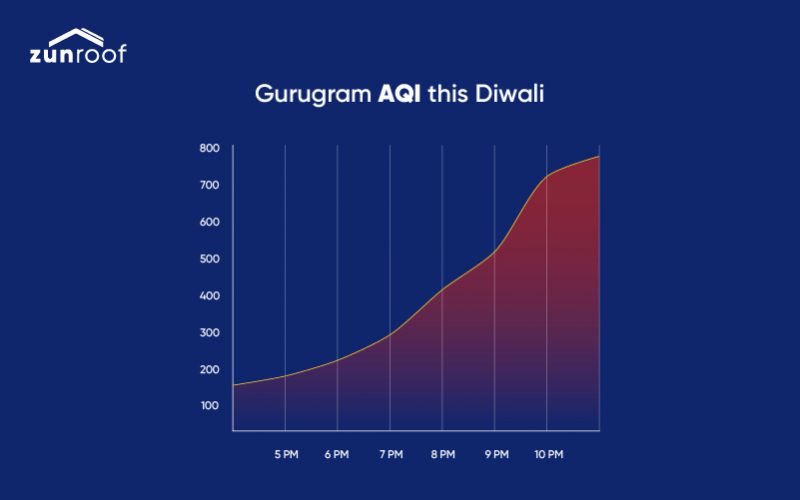Diwali, a festival every Indian looks forward to. New clothes, sweets, diyas and firecrackers combined with the holidays of schools, colleges and offices enlighten the enthusiasm in every member of the family. We have been celebrating it this way since childhood and will definitely not be comfortable if someone asks us to not burst crackers on Diwali.
Despite the apex court ruling in 2018 to ban bursting of polluting firecrackers and allowing green firecrackers, that too from 8 PM to 10 PM, NCR residents witnessed the most unacceptable limits of air pollution this Diwali.
As per the data reported by the pollution sensor installed by ZunRoof in sector 56, Gurugram, the AQI on this Diwali (27th October 2019) was between 163 and 384 till 7 PM. Unsurprisingly, from 8 PM to 9 PM the AQI was between 352 & 562, the next hour it rose to 557 & 733 and from 10 PM to 11 PM the AQI ranged 757 to 878.
An AQI between 0-50 is considered “good”, 51-100 “satisfactory”, 101-200 “moderate”, 201-300 “poor”, 301-400 “very poor”, and 401-500 “severe”. Above 500 is “severe-plus emergency” category. This Diwali, Gurgugram’s AQI was already very poor and it was further degraded to the severe-plus emergency category.
ZunRoof, a clean energy company that offers solar rooftops to residential customers for generating clean, smart and free electricity utilizing their roof, installed 15 pollution sensors last year across Gurugram.
ZunRoof, as its Corporate Social Responsibility, is offering to install pollution sensors in societies to raise awareness about the degrading air quality. Want to get a pollution sensor installed in your society? Mail us at marketing@zunroof.com
Contribute your bit in restoring the environment by installing a solar rooftop at your home. Apart from reducing your electricity bill by 90 to 95%, every kW solar is equivalent to planting 154 trees. Become a ZunWarrior, visit zunroof.com and book your site assessment today.

